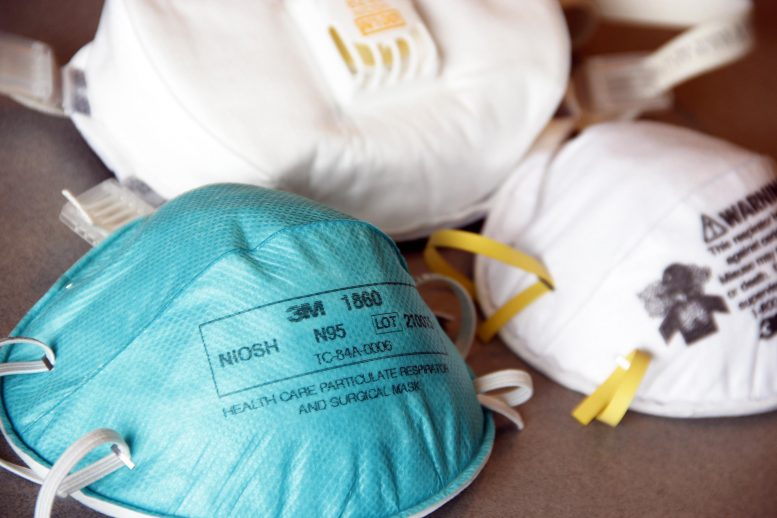
We once said that masks should only be reserved for medical personnel, but since then we have uncovered many facts and evidence that the proper usage of masks could be incredibly beneficial in preventative measures of spreading COVID-19 (Chadish, Maldarelli). This is especially targeted to the 30-45% of people who are COVID-19 positive and asymptomatic, which means they show no symptoms, whether that is they will never show them, or they will later after 2 weeks. People are actually most likely to spread the disease 2 days before they start showing symptoms if they do at all. Now with the confirmed nature of the virus being airborne, this is far more likely to spread in the given timeframe. As Monica Gandhi, a researcher interviewed by Popular Science on this topic states, masks are becoming more and more important in the prevention of spreading the virus.
After extensive research and the recent update on the characteristic of SARS-CoV-2, or the virus responsible for COVID-19 a strong correlation has been made between the quality of masks or even just the use of a mask and how the disease is contained; N95 masks and other similar quality masks are seen as more effective than other disposable options, but the use of face coverings itself has been proved promising in reducing the spread of COVID-19. A study done by researchers at Florida Atlantic University characterized the spread of the virus as an aerosol given different face coverings. They found that in the case with no masks, the droplets could travel more than 8 ft, about 3 ft 7in with a cloth covering, about 1ft 3in with a homemade double-layered cotton mask, and about 8in with a conical mask. As the data suggests, chances of droplet traveling decrease with increase in quality. However, they are still able to leak past it to some degree. Multiple research facilities, like Johns Hopkins University, suggest finding a mask that fits the face well and, when choosing one, the less you can see through it, the more effective it is. Even with the best masks, researchers emphasize social distancing should still be practiced considering the possible leakage.
The research mentioned is largely focused on preventing the spread of the virus if you had it, which is, without a doubt, incredibly important. However, if you are wondering, “is it possible to catch it wearing a mask and what will happen then?”, research suggests that on other viruses, like influenza, the viral load–the amount of viral particles you are exposed to–is directly correlated to how sick you may become from it. In other words, the less particles in your system, the less sick you will be if you are sick at all. Therefore, regardless of whether you are worried about contracting the virus or spreading it unknowingly, wearing a face covering appropriately is the way to go.
Looking at other countries who have seemed to conquer this pandemic, they all seemed to have taken social distancing and quarantine measures very strictly as well as worn masks with any public interaction. Currently, all but 4 states in the USA suggest or require the use of a mask in public spaces. However, all but 8 states, as of July 16th, are experiencing an increase in cases likely due to recent reopenings and public political and social events. Understandably, it may have been difficult to keep track of what is true and what is only speculation or false with all the new information we are learning each day. Many misconceptions may have caused uncertainty in where we stand in this fight with the pandemic. The following are some of the clarified common misconceptions listed by the World Health Organization*:
- Masks should not be heavily relied on and may not even be recommended during heavy exercise due to breathing discomfort. Rather, social distancing should be the best method of protection. However, many public spaces such as gyms enforce the use of masks which should be respected since it is likely due to a situation in which social distancing may not be guaranteed at all times
- There is not cure, in terms of medication and other supposed home remedies, for COVID-19
- This includes the use of bleach or similar chemical sanitary methods that instead cause bodily harm
- This includes medication previously speculated to be a cure for the disease, such as the malaria drug, hydroxychloroquine
- Temperature, whether it is high heat or low temperatures, does not affect the virus. In fact, research suggests what was previously speculated not to be the case that the virus can survive in the heat and humidity
- A person of any age, ethnic, sex, racial, or health background is susceptible to contracting the virus and disease
- There are no shortcut at-home ways to diagnose yourself with the disease such as holding your breath for an allotted time. If you suspect yourself of having the disease or start presenting symptoms, seek medical attention immediately
The stated list only contains some of the most common points covered by WHO; people will always have doubts and speculations and find ways to cope with new information that arise during this pandemic. Despite the stress of uncertainty and confusion, we must understand that the US is still on a long journey to recovery and the best way to tackle it day by day is to follow the footsteps of the rest of the world in that we must try to trust our knowledge in science and the health professionals who discover new facts everyday to make wise decisions in order to keep others and ourselves happy and healthy.
If you would like to have a more detailed look into the information given in this article, please refer to https://www.popsci.com/story/health/covid-masks-how-effective/ for the research of the masks, and https://www.who.int/emergencies/diseases/novel-coronavirus-2019/advice-for-public/myth-busters for the clarified misconceptions.
By Emin Lee
